Pickled onions are enjoyed all over the world, but why not try them the Japanese way? Japanese Pickled Onions, made with soy sauce for a rich, savory flavor, are delicious on their own and make the perfect accompaniment to rice.
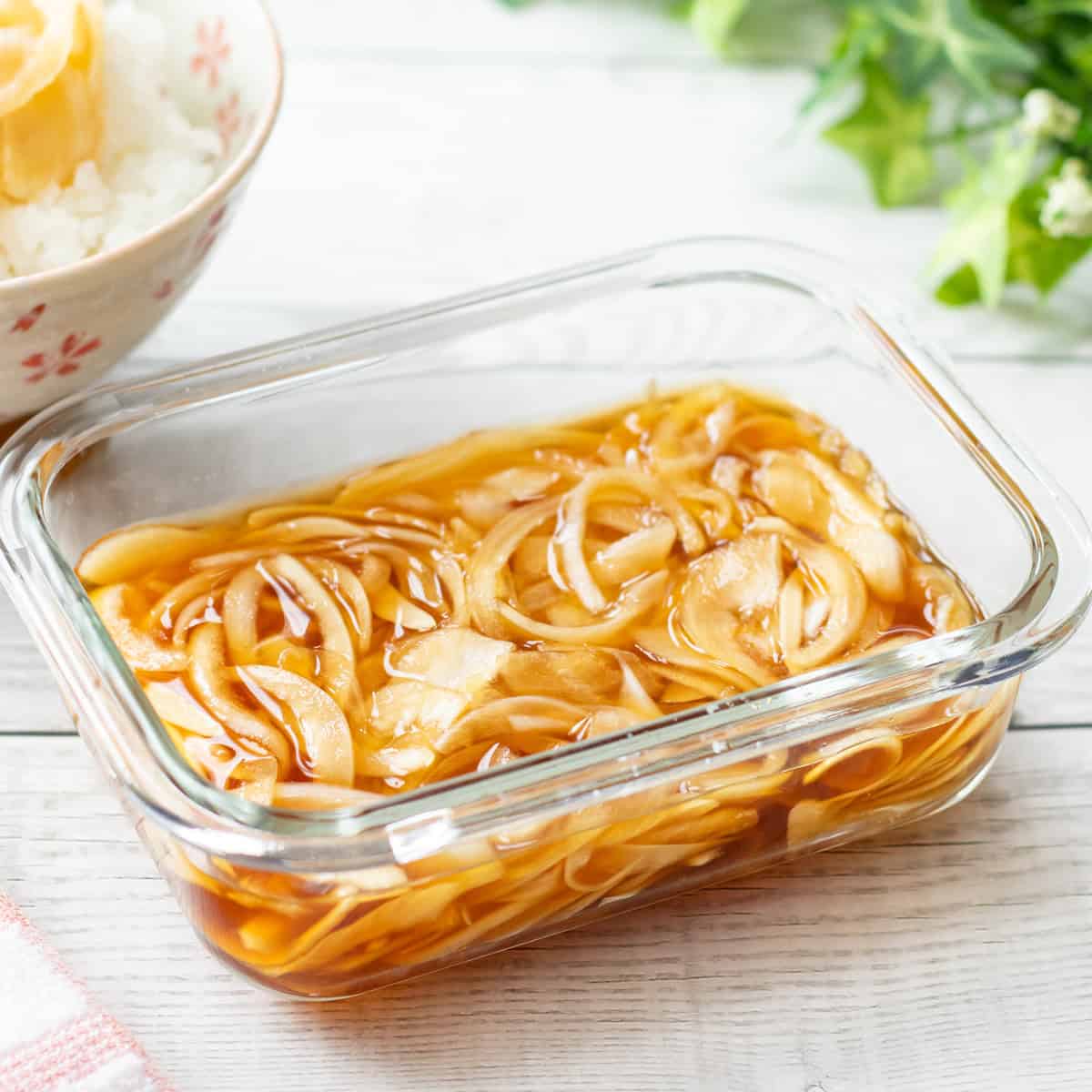
Jump to:
What is Japanese Pickled Onions?
Japanese Pickled Onions are a type of pickled vegetable made by marinating thinly sliced onions in rice vinegar, soy sauce, mirin, sugar, and other seasonings.
In Japan, there is little tradition of pickling vegetables primarily in vinegar; instead, people typically prepare and enjoy pickles as tsukemono (traditional Japanese pickles, which have a balance of salty and mildly sour flavors) or pickle them in soy sauce. This is because rice is a staple food in Japan, and pickles are expected to have flavors that complement it.
Japanese pickled onions are no exception—they are typically seasoned to pair well with rice. By adding soy sauce and mirin along with vinegar, the onions develop a slightly sweet and savory flavor.
The flavorful crunch of onions marinated in Japanese seasonings is exceptional, whether enjoyed on their own or as an accompaniment to rice. They are easy to make and don't require much effort, so feel free to give them a try.

Choosing and preparing onions
When making Japanese pickled onions, it is important to choose the right type of onion. You should select the mildest variety available.
In Japan, fresh onions, which are in season during spring, are often used. Sweet onions and red onions have similar characteristics. Essentially, any onion that is suitable for raw consumption will work well.
However, even if you choose a mild variety, the flavor may still be a bit strong. In that case, try one of the following methods to reduce their sharpness:
- Exposure to air: After slicing the onion, spread the slices out to avoid overlap as much as possible and let them sit for at least an hour. The longer they are exposed to air, the milder they become.
- Soak in water: Soak the sliced onions in a bowl of water for 5-10 minutes. Be careful not to soak them for too long, as this can reduce not only their pungency but also their nutritional value.
- Rub with salt or sugar: Sprinkle salt or sugar over the sliced onions, rub them gently, and let them sit for 5-10 minutes. Then, rinse them under running water and pat them dry.
- Soak in vinegar water: Submerge the sliced onions in a mixture of water and vinegar for 5-10 minutes (1 tsp of vinegar per ⅖ cup/100 ml of water). There is no need to rinse them afterward.
The further down the list you go, the more effective the methods are at reducing sharpness. Choose a method based on the sharpness of your onions. If you want to significantly reduce the sharpness, you can combine multiple methods.
Additionally, slicing onions along the fibers (following their natural lines) can also help reduce their sharpness.
Preparing the seasoning mixture
After slicing the onions, soak them in the seasoning mixture to allow the flavors to meld. In my recipe, I use the following ingredients:
- Rice vinegar
- Soy sauce
- Mirin
- Sugar
- Salt
It is best to briefly simmer all of these ingredients except for the soy sauce. This step helps mellow the acidity of the vinegar, evaporate the alcohol in the mirin, and dissolve the sugar and salt more effectively. The reason that the soy sauce is not cooked with the others is to preserve its delicate flavor.
In Japan, it is also common to add the following ingredients for extra flavor variations:
- Garlic
- Chili peppers
- Sesame oil
- Olive oil
If you add these ingredients, there is no need to simmer them either. Start by following the recipe as written, and if you want to experiment with different flavors, feel free to adjust it to suit your taste.
Other Japanese pickled dishes using soy sauce
In Japan, there are many pickled dishes made with soy sauce, in addition to Japanese pickled onions. Currently, my recipe collection includes the following:
- Nitamago (seasoned boiled eggs, also known as ramen eggs)
- Soy Cured Egg Yolks
- Pickled Shiso (Perilla) Leaves in Soy Sauce
- Savory Pickled Green Onions (Scallions)
Each of these is delicious on its own and also makes a great accompaniment to rice, so if you are interested, I highly recommend giving them a try.
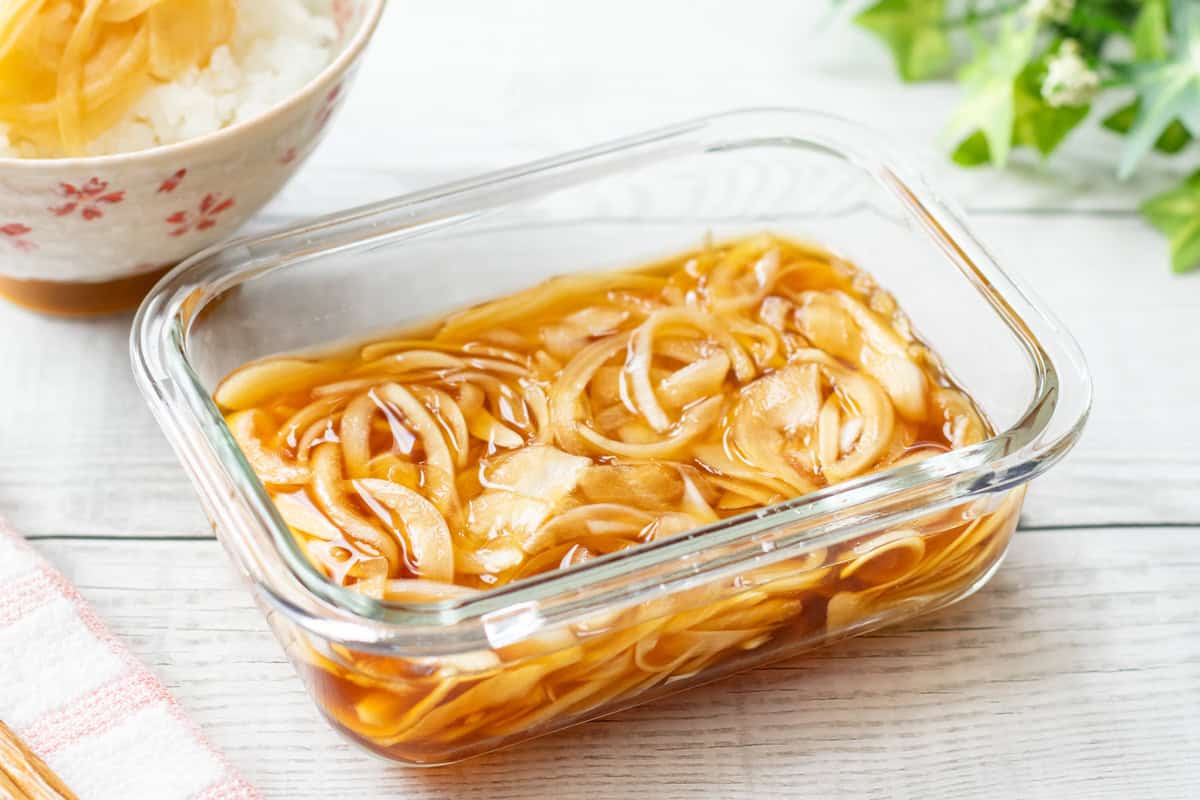
📋Step-by-step recipe
Ingredients
- 1 medium-sized mild onion (about 6-7 oz/170-200 g, such as a sweet onion or red onion)
For the seasoning mixture:
- 2 Tbsp rice vinegar
- 2 Tbsp mirin
- ½ Tbsp sugar
- ¼ tsp salt
- 2 Tbsp soy sauce (to be added in step 3)
Instructions
🕒 Total: 9 hrs 5 mins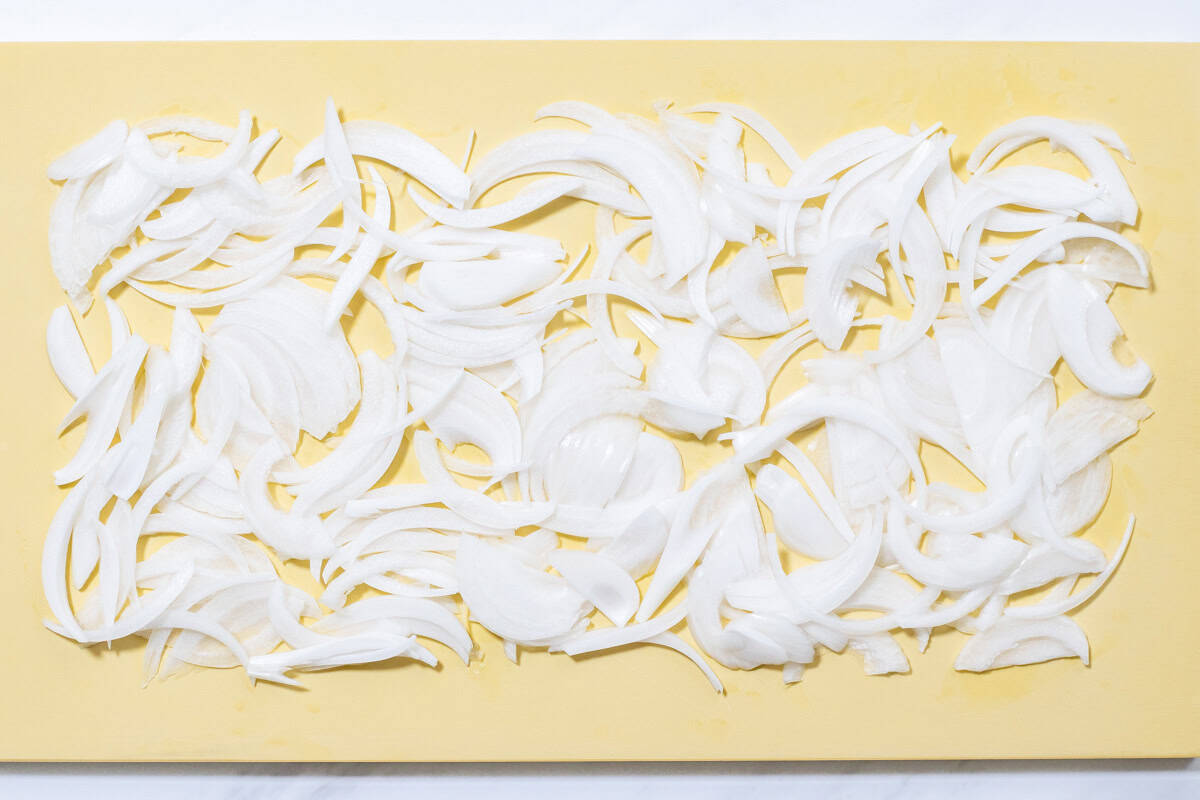
Step 1
Thinly slice the onion along the fibers (following their natural lines). Spread the slices out to avoid overlap as much as possible and let them sit for at least an hour.
Exposing the onion to air helps reduce its sharpness. If you are using a variety with little to no pungency, you can skip this process. Alternatively, if you are using a stronger variety, there are other methods to reduce its sharpness.
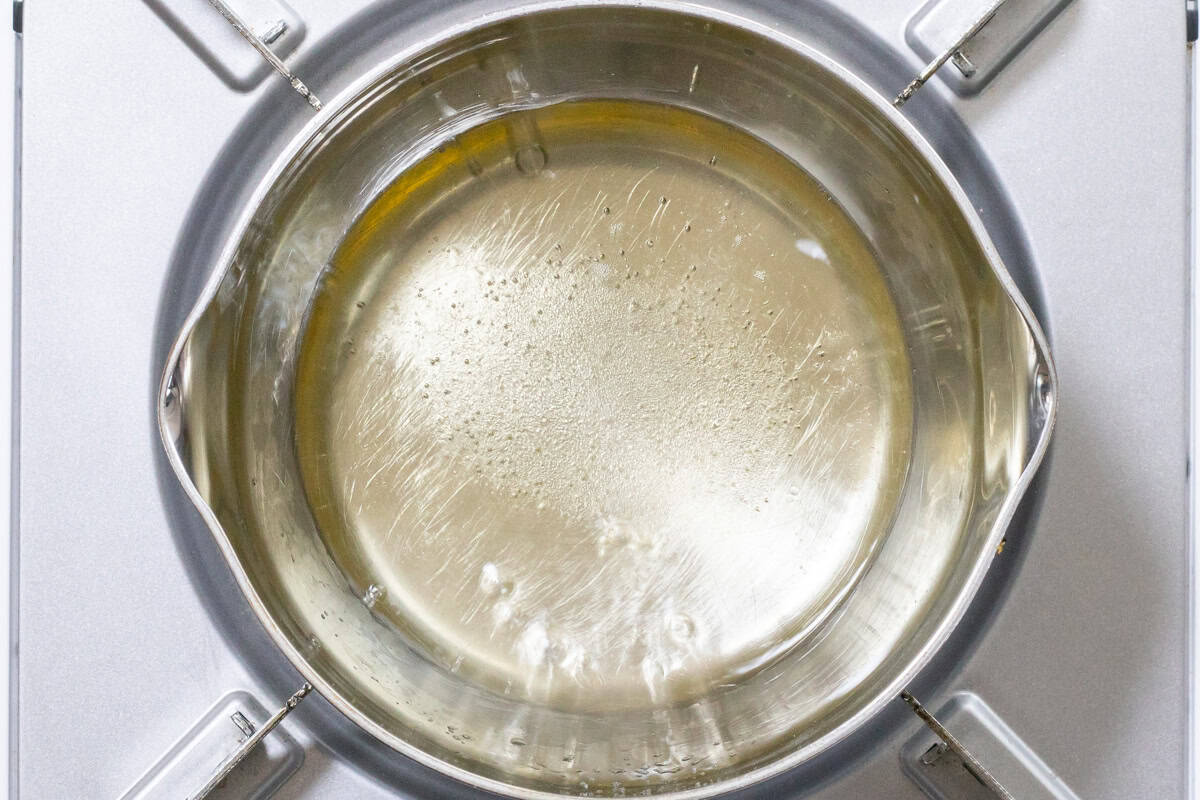
Step 2
In a small pot, combine rice vinegar, mirin, sugar, and salt, then heat over low heat. Once it comes to a simmer, let it cook for about 30 seconds.

Step 3
Remove the pot from the heat and add soy sauce. Mix gently until the sugar and salt are fully dissolved.
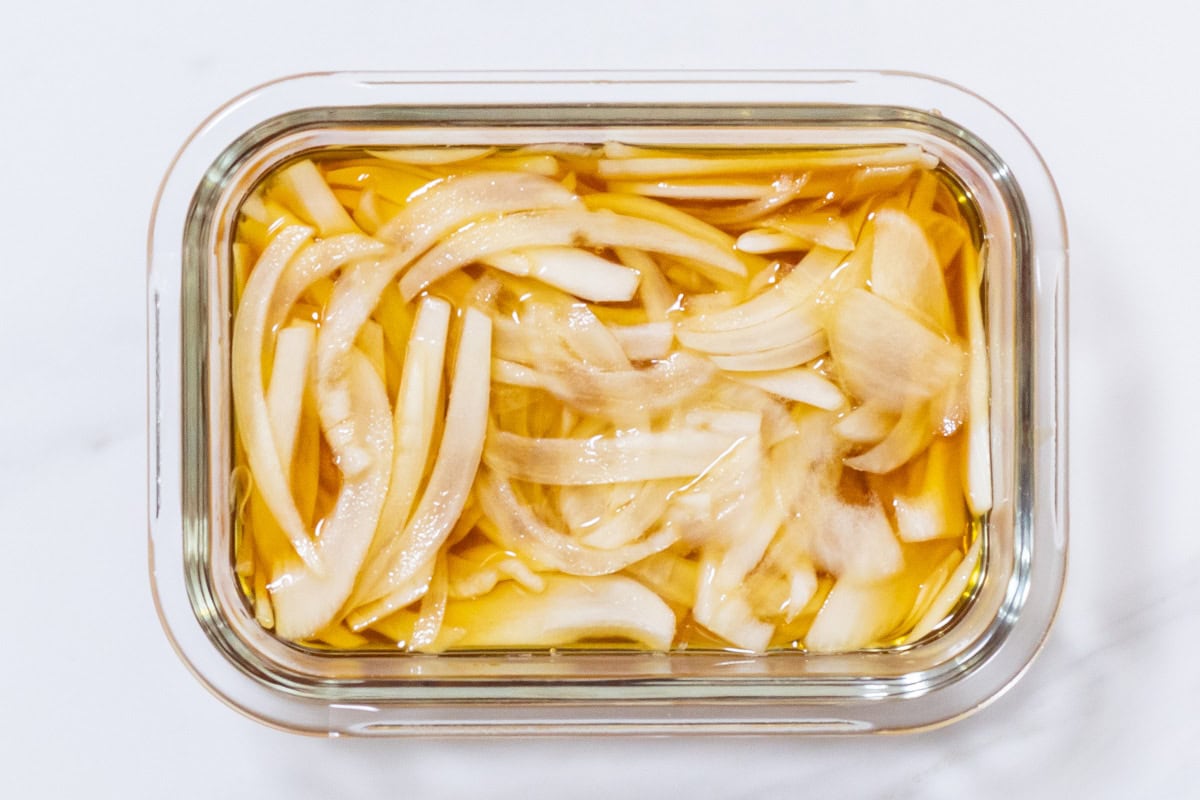
Step 4
Transfer the onion slices and seasoning mixture to a sterilized, airtight container, making sure the slices are fully submerged. Let them sit in the refrigerator overnight.
If you are using a large container, keep in mind that the seasoning mixture may not completely cover the onion slices. If you don’t have a container of the right size, a plastic bag is a great alternative to ensure the seasoning mixture is evenly distributed.
To store
You can store it in the refrigerator for up to 4 days.
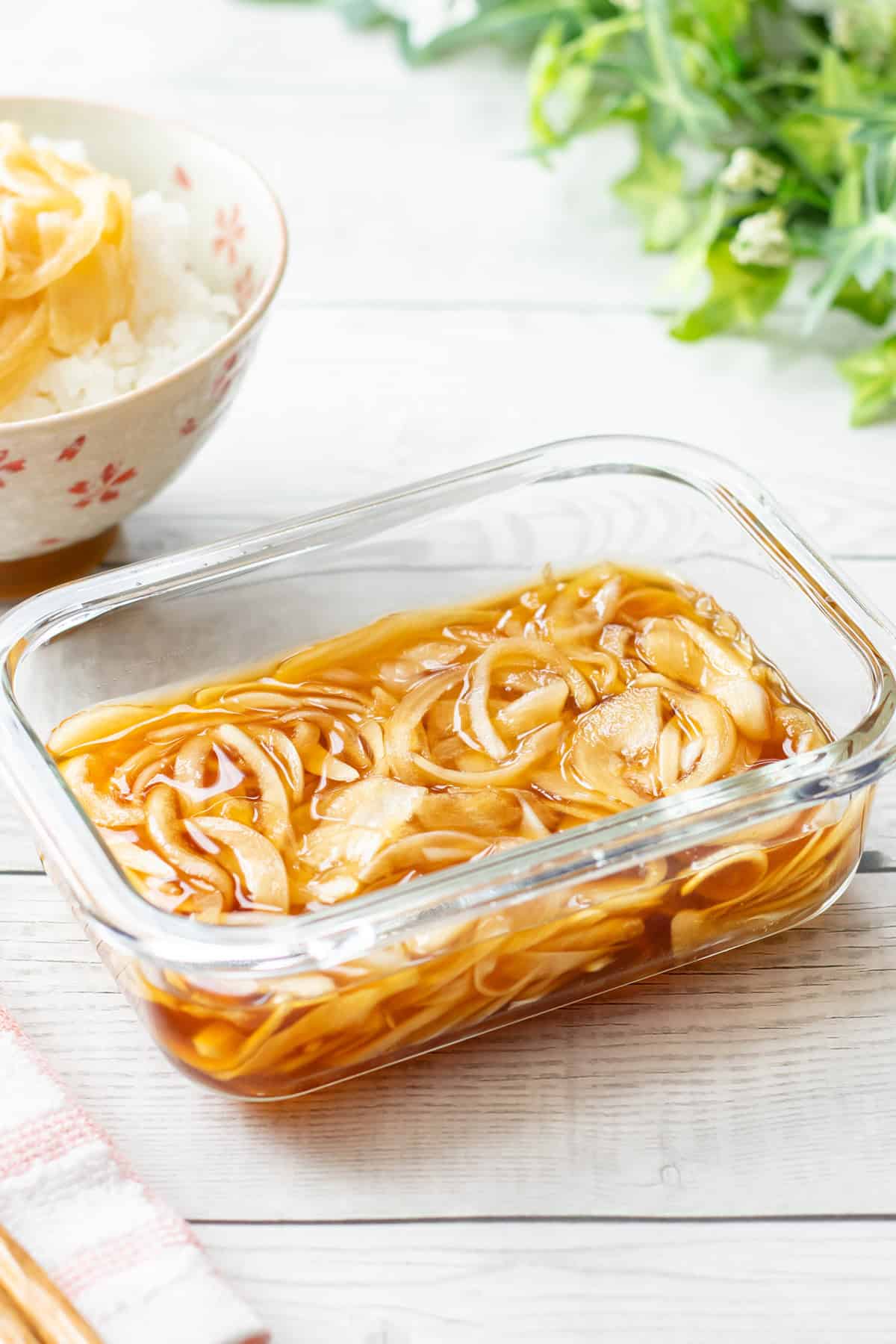
If you try this recipe, I’d love to hear what you think. Please consider leaving a review and star rating in the comments below. If you enjoyed it, I’d really appreciate it if you shared it with your friends.
More rice topping recipes you'll love
Recipe card

Japanese Pickled Onions
Ingredients
- 1 medium-sized mild onion (about 6-7 oz/170-200 g, such as a sweet onion or red onion)
For the seasoning mixture:
- 2 Tbsp rice vinegar
- 2 Tbsp mirin
- ½ Tbsp sugar
- ¼ tsp salt
- 2 Tbsp soy sauce (to be added in step 3)
Instructions
- Thinly slice the onion along the fibers (following their natural lines). Spread the slices out to avoid overlap as much as possible and let them sit for at least an hour.Exposing the onion to air helps reduce its sharpness. If you are using a variety with little to no pungency, you can skip this process. Alternatively, if you are using a stronger variety, there are other methods to reduce its sharpness.
- In a small pot, combine rice vinegar, mirin, sugar, and salt, then heat over low heat. Once it comes to a simmer, let it cook for about 30 seconds.
- Remove the pot from the heat and add soy sauce. Mix gently until the sugar and salt are fully dissolved.
- Transfer the onion slices and seasoning mixture to a sterilized, airtight container, making sure the slices are fully submerged. Let them sit in the refrigerator overnight.If you are using a large container, keep in mind that the seasoning mixture may not completely cover the onion slices. If you don’t have a container of the right size, a plastic bag is a great alternative to ensure the seasoning mixture is evenly distributed.
Notes
- You can store it in the refrigerator for up to 4 days.
- The Nutrition Facts label reflects the values assuming that the entire seasoning mixture is consumed.



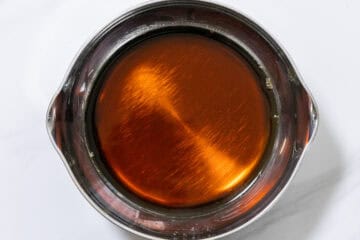
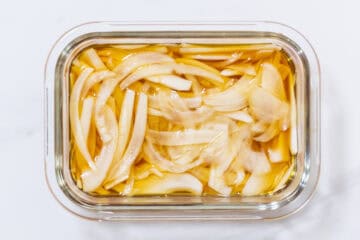
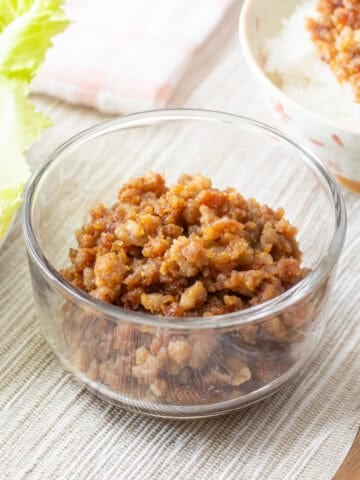
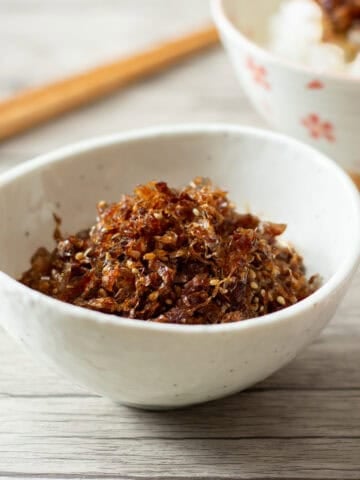
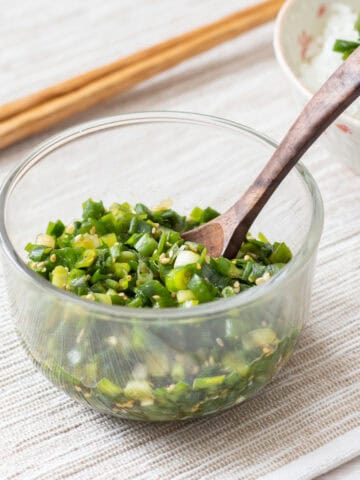
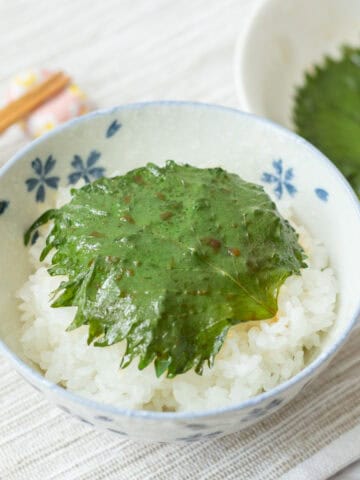
Leave a Rating and a Comment